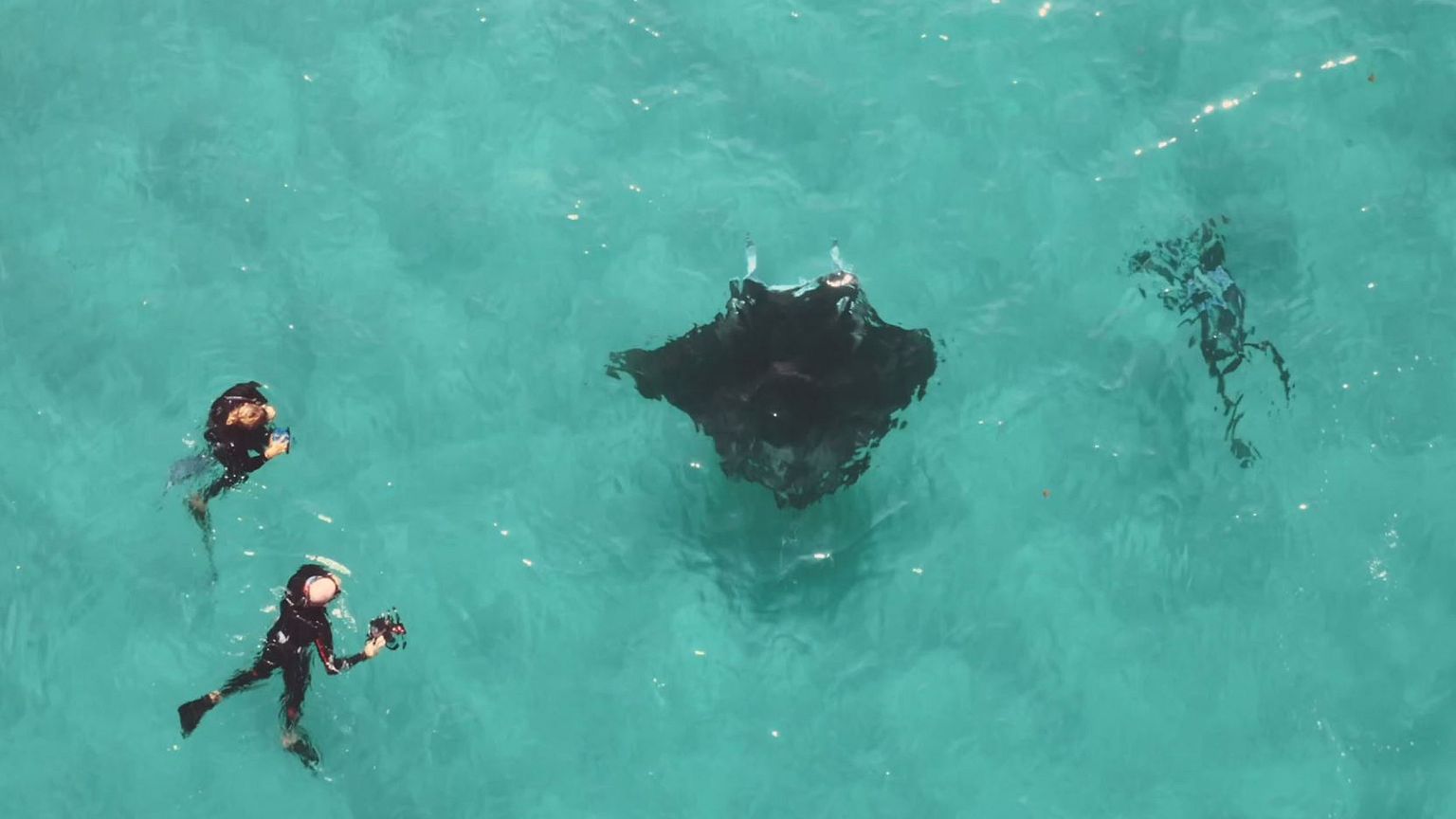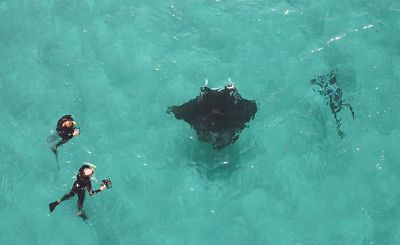"So I knew as soon as she started to interact with us, it was something very special," said Jake Wilton.
An Australian underwater photographer has described how he rescued a manta ray in a rare encounter after the animal appeared to seek out his help.Jake Wilton told NBC News that he knew he was witnessing something extraordinary when a nearly 10-foot manta ray swum by him recently, seeming to be trying to get his attention."It's very rare for an animal to turn and come back over to you and present themselves," Wilton, who is an experienced diver, he said on Friday. "So I knew as soon as she started to interact with us, it was something very special."
It was the middle of May, and Wilton had been guiding a group of snorkelers in the Ningaloo Coast reef off Western Australia. Large fish hooks were buried in the animal's skin, dangerously close to its right eye, he said.He knew he had to act quickly, Wilton said, literally holding his breath to get to the injured animal, which is known to local divers at Freckles."I wasn't really thinking about anything else except trying to get them out," he said. "I really didn't want to mess it up."
News
Video of the incident was posted online two weeks ago and went viral in last few days.Marine biologist Monty Halls said he watched Wilton dive repeatedly toward Freckles, which didn't move away."I think the manta knew that Jake was trying to get the hooks out," he said.When Wilton finally eased the hooks out of the wounded animal, he and the snorkelers cheered and cried."It was pretty emotional," he said. "I went down again, just one last time, just to say goodbye and she actually stopped and waited there."He says he saw Freckles two weeks after the incident and she appeared to be doing well, feeding along the beach."She seemed fine, which means we helped her, it worked," Wilton said.Manta rays are categorized as vulnerable on the Red List of the International Union for Conservation of Nature, mainly due to fishing.Despite their size — up to around 25 feet across — manta rays only eat plankton, shellfish and small fish. And unlike stingrays, manta rays don't have an external spike and are harmless to humans.
















